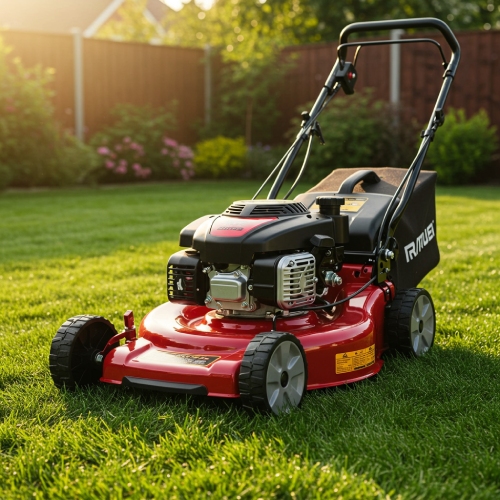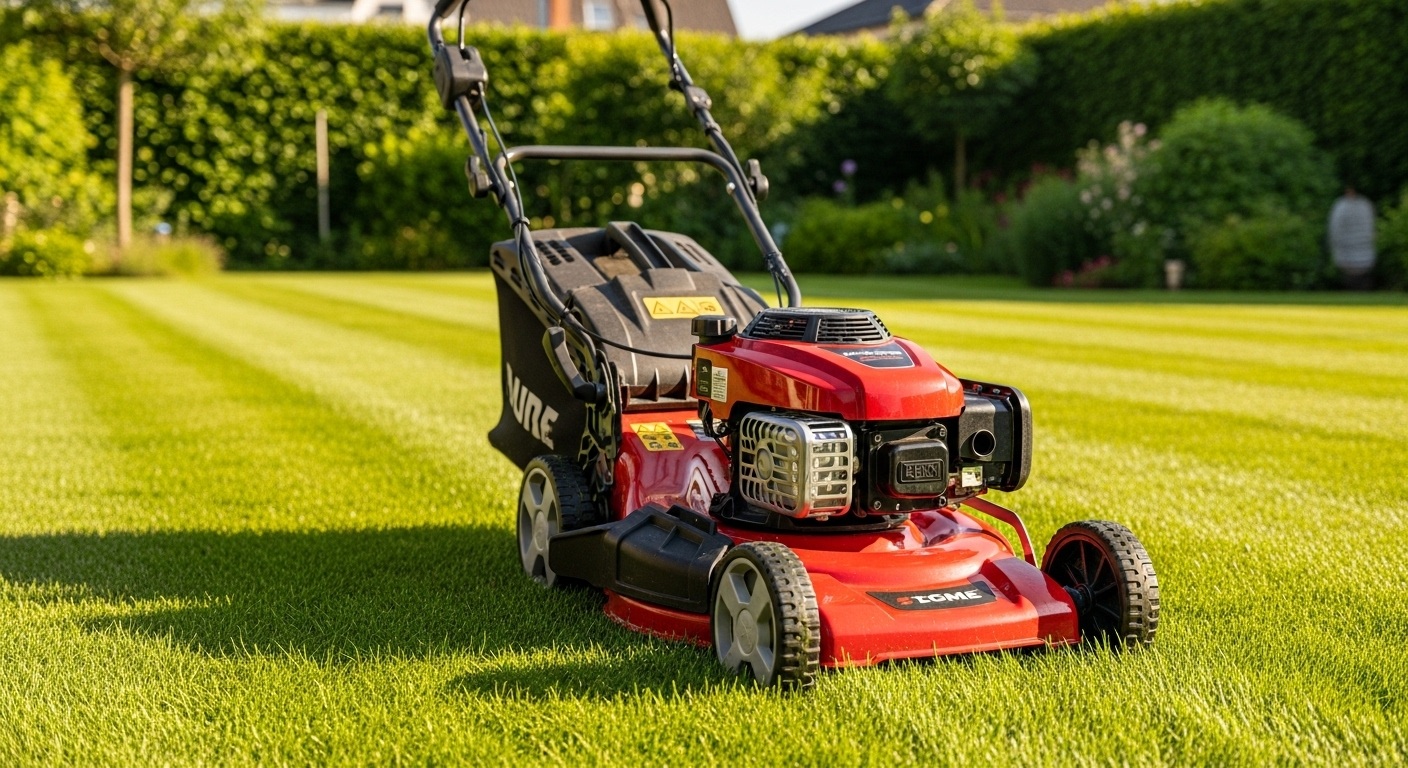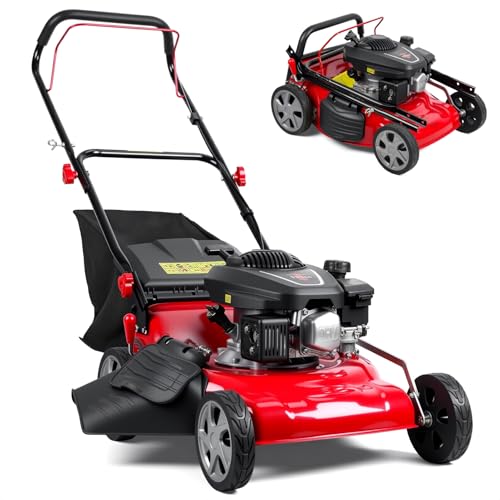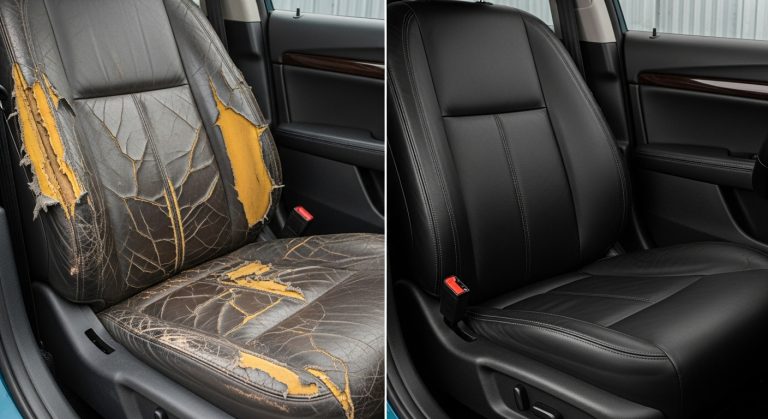Best Budget Self Propelled Lawn Mower: Top Picks for 2026
Finding the perfect balance between affordability and performance can transform your lawn care routine. Budget-friendly self-propelled mowers offer the convenience of motorized assistance without breaking the bank. This comprehensive guide reveals the top affordable options that deliver exceptional cutting power and reliability.
You’ll discover key features to prioritize when shopping, understand different engine types, and learn maintenance tips that extend your mower’s lifespan. Whether you’re tackling small suburban yards or medium-sized properties, these budget picks will help you achieve professional-looking results. Let’s explore how to find your ideal mowing companion without overspending.
Key Takeaways
- Self-propelled mowers reduce physical effort by using engine power to move forward automatically, making lawn care less strenuous while you focus on steering and maintaining cutting patterns.
- Engine power between 140cc to 180cc provides optimal performance for small to medium lawns without excessive fuel consumption, while cutting deck widths of 20-22 inches balance efficiency with maneuverability.
- Rear-wheel drive excels on slopes and uneven terrain, while front-wheel drive works better for flat lawns with frequent direction changes – choose based on your specific yard conditions.
- Battery-powered models offer quiet operation and zero emissions with 30-45 minutes runtime, while gas engines provide consistent power and extended operation without charging delays.
- Regular maintenance extends lifespan significantly – including oil changes every 50 hours, air filter cleaning every 25 hours, and annual spark plug replacement to ensure 8-12 years of reliable service.
- Avoid common buying mistakes like underestimating power needs, ignoring drive system types, or focusing solely on initial cost without considering long-term maintenance and fuel expenses.
- Properties between quarter-acre to one acre benefit most from self-propelled mowers, as smaller lawns may not justify the cost over push mowers while larger areas often require riding mowers.
Understanding Self-Propelled Lawn Mowers
Self-propelled mowers use engine power to move forward automatically, reducing the physical effort required for lawn maintenance. Unlike push mowers, these machines feature a drive system that propels the unit while you guide its direction.
The propulsion mechanism typically connects to either the front or rear wheels through a belt-driven system. This design allows operators to focus on steering and maintaining cutting patterns rather than pushing heavy equipment across the yard.
Most budget models offer variable speed control, letting you adjust the walking pace to match your comfort level. This feature proves especially valuable when navigating slopes, thick grass, or uneven terrain where consistent momentum matters.
Key Features to Look for in Budget Models
Engine power remains the most critical factor when selecting an affordable self-propelled mower. Look for engines between 140cc to 180cc for optimal performance on small to medium lawns without excessive fuel consumption.
Cutting deck width typically ranges from 20 to 22 inches in budget categories. Wider decks reduce mowing time but may struggle in tight spaces, while narrower options provide better maneuverability around obstacles.
Height adjustment systems should offer multiple cutting positions, ideally between 1.25 to 4 inches. Single-lever adjustment mechanisms provide convenience and ensure uniform cutting height across the entire deck width.
Drive wheel configuration affects performance significantly. Rear-wheel drive models excel on slopes and uneven terrain, while front-wheel drive options work better for flat lawns with frequent direction changes.
Top Budget Self-Propelled Mower Categories
Gas-Powered Options
Gasoline engines deliver consistent power and extended runtime, making them ideal for larger properties. Budget gas models typically feature Briggs & Stratton engines known for reliability and easy maintenance.
These mowers excel in thick grass conditions and don’t require charging time between uses. Fuel efficiency has improved significantly in recent years, with many models offering extended operation on a single tank.
Starting systems have evolved from traditional pull-cord mechanisms to more user-friendly options. Many budget models now include ReadyStart technology that eliminates choke and primer requirements.
Battery-Powered Alternatives
Cordless electric mowers provide quiet operation and zero emissions, perfect for noise-sensitive neighborhoods. Budget battery models typically use 40V systems that balance power with affordability.
Runtime capabilities vary significantly among budget options, with most providing 30-45 minutes of continuous operation. This duration suits lawns up to half an acre when used efficiently.
Battery compatibility with other tools can add significant value. Many manufacturers offer interchangeable battery systems that work across their entire product lineup, reducing long-term costs.
Essential Maintenance Tips for Longevity
Regular blade sharpening ensures clean cuts and reduces engine strain. Dull blades tear grass rather than cutting cleanly, leading to brown tips and increased disease susceptibility.
Air filter cleaning should occur every 25 hours of operation or at least once per season. Clogged filters reduce engine performance and increase fuel consumption significantly.
Oil changes require attention every 50 hours of use or annually, whichever comes first. Using the manufacturer’s recommended oil type prevents premature engine wear and maintains optimal performance.
Spark plug replacement annually ensures reliable starting and smooth operation. This simple maintenance task prevents frustrating starting problems and maintains fuel efficiency.
Choosing the Right Size for Your Yard

Lawn size directly impacts the ideal mower specifications you should consider. Properties under quarter-acre work well with 20-inch cutting decks, while larger areas benefit from wider options.
Terrain considerations affect both engine power and drive system requirements. Flat lawns allow for smaller engines, while slopes and uneven ground demand more robust propulsion systems.
Storage space limitations may influence your choice between compact and full-size models. Many budget mowers offer folding handles that reduce storage footprint significantly.
Grass type and growth patterns also matter. Dense, fast-growing varieties require more cutting power, while sparse lawns can be maintained with smaller engines effectively.
Performance Comparison: Gas vs Battery
Power delivery differs significantly between fuel types. Gas engines provide consistent power throughout operation, while battery models may experience power fade as charge levels decrease.
Operating costs vary considerably over time. Gas mowers require ongoing fuel purchases and more frequent maintenance, while battery models need eventual battery replacement after several years.
Environmental impact favors battery-powered options with zero direct emissions. However, electricity generation and battery manufacturing create indirect environmental effects worth considering.
Convenience factors include starting ease, noise levels, and maintenance requirements. Battery mowers start instantly and run quietly, while gas models offer extended runtime without charging delays.
Common Mistakes to Avoid When Buying
Underestimating power needs leads to frustrating performance issues. Choose engines with adequate capacity for your specific grass conditions and terrain challenges rather than selecting the smallest available option.
Ignoring drive system types can result in poor performance on your particular lawn. Front-wheel drive struggles on slopes, while rear-wheel drive may be harder to maneuver in tight spaces.
Overlooking cutting options limits versatility. Ensure your chosen model offers mulching, bagging, and side discharge capabilities to handle different seasonal requirements effectively.
Focusing solely on initial cost without considering long-term expenses can be costly. Factor in maintenance requirements, fuel costs, and expected lifespan when making your decision.
Frequently Asked Questions
What size lawn is best suited for a self-propelled mower?
Self-propelled mowers work excellently for lawns between quarter-acre to one acre in size. Properties smaller than quarter-acre may not justify the additional cost over push mowers, while larger areas often benefit from riding mowers. The self-propelled feature becomes most valuable on slopes, uneven terrain, or when dealing with thick grass conditions that make pushing difficult.
How long do budget self-propelled mowers typically last?
Quality budget self-propelled mowers can provide 8-12 years of reliable service with proper maintenance. Key factors affecting lifespan include usage frequency, maintenance consistency, and storage conditions. Regular oil changes, blade sharpening, and proper winter storage significantly extend operational life. Engine quality and build materials also influence longevity, making research into manufacturer reputation worthwhile.
Are battery-powered models as powerful as gas versions?
Modern battery-powered mowers offer comparable performance to gas models for most residential applications. 40V and higher battery systems provide sufficient power for typical lawn conditions. However, gas engines maintain consistent power throughout operation, while battery models may experience reduced performance as charge depletes. Runtime limitations make batteries better suited for smaller properties.
What maintenance is required for self-propelled mowers?
Essential maintenance includes seasonal oil changes, air filter cleaning, spark plug replacement, and blade sharpening. Self-propelled models also require drive belt inspection and wheel bearing lubrication. Battery models need less maintenance but require proper charging habits and eventual battery replacement. Following manufacturer maintenance schedules prevents costly repairs and ensures optimal performance throughout the mower’s lifespan.
Can I use a self-propelled mower on steep slopes?
Rear-wheel drive self-propelled mowers handle moderate slopes effectively, typically up to 15-degree inclines safely. However, extremely steep terrain requires specialized equipment or alternative cutting methods. Always mow across slopes rather than up and down to maintain control and prevent accidents. Consider your physical capabilities and comfort level when operating on inclined surfaces, as emergency stopping may still require significant effort.
Make Your Lawn Care Dreams Reality
Investing in the right budget self-propelled mower transforms tedious yard work into an efficient, enjoyable experience. These affordable machines deliver professional-quality results while reducing physical strain and time investment significantly.
The models highlighted in this guide offer proven reliability and performance without premium pricing. Whether you choose gas or battery power, prioritizing essential features over unnecessary extras ensures maximum value for your investment.
Take action today and upgrade your lawn care routine with a self-propelled mower that matches your specific needs and budget constraints perfectly.










